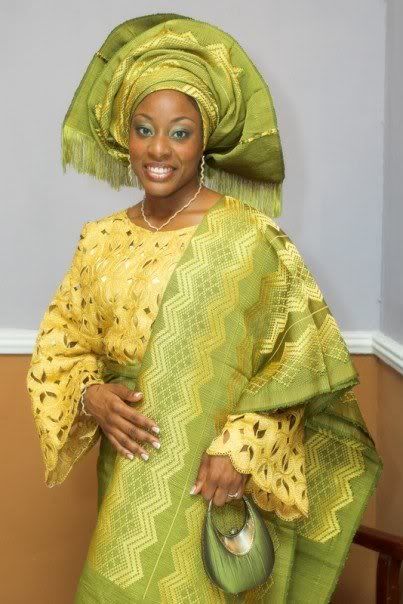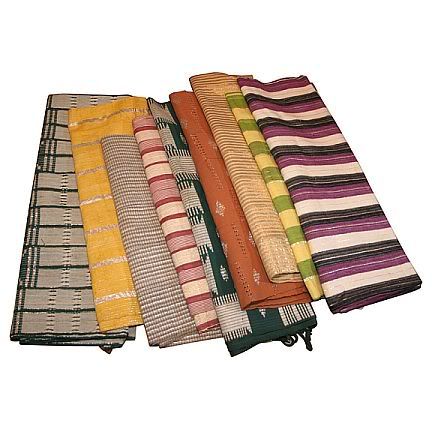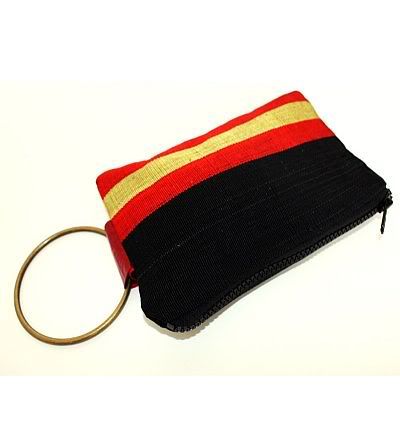
Many non-Africans and Africans in the West really want to experiment with African fabrics but they have no idea where to begin. For many, myriad questions abound such as: 1) Are my only options the Kente or mud cloth? 2)What do African fabrics feel and look like? 2) where do you get them from? 3) What are their flexibilities i.e. can I stay chic, sexy and modern even though I want to embrace Africa in my fashion style?
We covered, in the past, "How to Choose and Care for African Fabrics and more specifically the "Ankara" fabric. In this article, we discuss how to choose and care for the African fabric known as "Aso Oke" [pronounced Asho okay].
Aso Oke mimics Ankara in terms of its rising popularity and many end uses. Unlike Ankara, however, Aso Oke has never been relegated to the back of the bus or second class citizen status. Oh no, no no! On the contrary, Aso Oke has been and is royalty defined.
Let's get into the anatomy of the Aso Oke fabric, shall we?
Where is it from?
Aso Oke hails from Nigeria, West Africa.
Who Makes it?
The fabric is mostly woven by Yoruba men weavers. The Yorubas are people from the Southern part of the country. The fabric is designed on a narrow strip loom. Traditionally, only the Yorubas wore Aso Oke. Today, the whole country and many Nigerians across the globe wear Aso Oke.
How many types of Aso Oke are there?
There are many but the famous ones are the Sanyan, Alaari and Etu. The traditional names are now competing for with new names like "Super Q" and "Silky Stripes."
Where do the raw materials used to make Aso Oke come from?
Cotton is a common source. Other sources include the cocoon of the anaphe infacta moth, this is very common with the Sanyan. Another source is the Magenta waste silk from Europe. This is common in the Alaari Aso Oke.
How is Aso Oke designed in case I want to experiment with new textile designs?
The Aso Oke is formed by warp and weft stripes. It is mostly openwork in which “holes are created by using extra threads to tie together groups of warps, with the extra wefts themselves forming a pattern on the cloth surface."
How do I care for Aso Oke
Mostly Hand Wash. It can also be dry cleaned in light of silk fabrics used to design it.
Aso Oke Sounds intriguing. Would it fit me?
Absolutely. Most African fabrics are designed in a very forgiving way. As such, Aso Oke like many African fabrics has great draping qualities, accommodates all body shapes and sizes, breathes easy because of its open work and to top it off, it has a luxurious look to it.
Did you leave some uncool stuff out?
While the Aso Oke generally has a soft hand, it can sometimes feel uncomfortable depending on how it is made. It is also quite expensive because of the raw materials used and intricacies of designs.
What are its end use/uses?
You can wear Aso Oke to red carpet events, weddings,birthdays, festivals, funerals and so much more. Aso Oke has historically been worn by royalty of the Yoruba land. Today, everyone including children wear them. Aso Oke is also being designed into fabulous dressses, clutches, purses, bags and so much more!
How is Aso Oke traditionally worn?
Gele [head wrap]
Ipele [Shawl] This is placed on your right or left shoulder depending on what you want.
Iro [wrap around skirt]
Buba [blouse] This can be made out of the Aso Oke fabric. However, most use the African voile lace as a contrast to the gele, ipele and iro.
What kind of Accessories are typically worn with Aso Oke?
You can accessorize with earrings, necklaces, clutches, handbags etc. depending on the style and design of your Aso Oke. For shoes, very often, sexy and sophisticated pointed toe sling backs or strappy sandals with a 2 to 4inch heels are worn.
Where can I buy Aso Oke?
In the West, start with your local African fabric store. If you cannot find one, ask even more specifically for a Nigerian Fabric and fashions store. If that does not suffice, log on the internet and check out the following sites:
Tenuci.com
Adire.clara.net
Urban Knit Designers
Steven Sclaroff


Happy shopping and experimenting with Aso Oke!
**Quote from the very informative Adire.Clara.net site.


1 comments:
Glad to find your blogazine thru my Google alerts. Thanks for a great article on Aso Oke. I'm an author & designer specializing in th use of African textiles for sewing, decorating, quilting & crafts. Check out my work at www.CulturedExpressions.com.
Continued Success!
lisa in NJ
Post a Comment